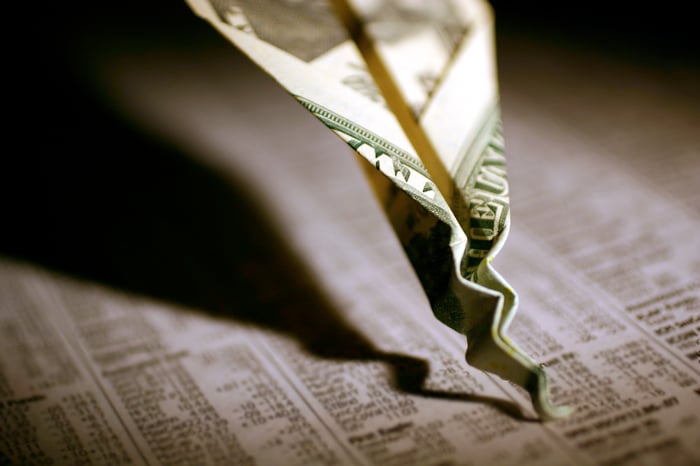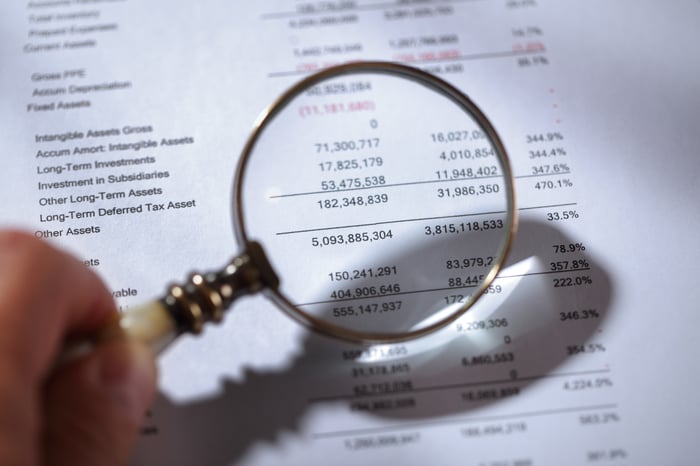What a difference a year makes! Roughly 13 months ago, on March 23, 2020, the stock market was in an all-out nosedive as fear and uncertainty peaked surrounding the pandemic. It took just 33 calendar days for the benchmark S&P 500 (^GSPC -1.20%) to shed 34% of its value.
But in those subsequent 13 months, investors have been treated to a historic bounce-back rally. Through April 21, 2021, the widely followed index had risen by close to 87% on a nominal basis, or about 88% if you include dividends paid. Although I am cherry-picking the bottom here, that's a ridiculously good return when considering that the S&P 500 has averaged a total annual return of just over 10% since 1980.
The question is: Are thing too good? According to five metrics, they just might be.
While it's impossible to predict with any accuracy when a stock market crash will occur, how long it'll last, or how steep the decline will be, these metrics all appear to imply that the likelihood of a crash or serious correction is increasing by the day.

Image source: Getty Images.
1. History serves as a warning for the S&P 500's Shiller P/E ratio
Arguably the biggest red flag from a fundamental standpoint is the S&P 500's Shiller price-to-earnings (P/E) ratio, which is also commonly referred to as the cyclically adjusted P/E, or CAPE. The Shiller P/E is based on average inflation-adjusted earnings from the previous 10 years.
As of April 21, the Shiller P/E ratio for the S&P 500 was 37.49. That's well over double its average annual reading of 16.81 since 1870.
What's particularly concerning is what's happened previously when the Shiller P/E ratio has surpassed and stayed above 30. In the previous four instances (the Great Depression, the dot-com boom, Q4 2018, and the coronavirus crash), the S&P 500 has lost anywhere from 20% to 89% of its value. While an 89% loss is very unlikely with the Federal Reserve and federal government willing to provide seemingly unlimited support to financial markets, a sizable double-digit correction has become the expectation when valuations extend well past historic norms.

Image source: Getty Images.
2. The S&P 500's price-to-sales ratio is worryingly high
A second reason to be concerned can be found in the S&P 500's price-to-sales (P/S) ratio. This ratio describes the value of the S&P 500 index relative to the aggregate revenue its 500 components are bringing in. As a general rule, the lower the price-to-sales ratio, the more fundamentally attractive an investment.
As of April 21, the S&P 500's price-to-sales ratio was estimated at 3.06. This is an unquestioned high point dating back at least 21 years. In fact, the S&P 500's P/S ratio hadn't ended the year higher than 2 at any point this century prior to 2017. Since the end of 2018, the P/S ratio for the widely followed index has expanded 64%.
On one hand, an increased reliance on technology should allow companies to be more efficient, thus expanding their operating margins. On the other hand, nothing historically shows that P/S ratios this high can be sustained.

Image source: Getty Images.
3. The S&P 500's price-to-book value spells trouble
A third metric that could cause warning bells to go off is the S&P 500's price-to-book (P/B) ratio. This is a measure of the S&P 500's market capitalization divided by the book value of the equities that make up the index. Like the P/S ratio, a lower value is generally indicative of an equity or index being undervalued.
As of this past week, the price-to-book-value of the S&P 500 topped 4.5. That's closing in on the highest level reached this century, 5.06, set back in March 2000. If March 2000 rings a bell, it's because that's when the dot-com bubble hit its peak. For some context, the average P/B value over the past 21 years is 2.87.
Although the P/B ratio has lost much of its importance as technology and innovation have taken over, it's still concerning that the index subsequently lost about half of its value the last time the ratio was this high.

Image source: Getty Images.
4. The S&P 500's earnings yield isn't attractive
The fourth worrisome metric is the S&P 500's earnings yield. Whereas the price-to-earnings ratio is a measure of share price divided by earnings per share, the earnings yield is earnings per share divided by share price, and multiplied by 100 to yield a percentage.
Since 1870, the average earnings yield for the S&P 500 is 7.31%. That's a lot higher than what investors can typically generate from bonds, which is why equities are often such a smart and desirable investment. But as of April 21, the earnings yield of the S&P 500 was a measly 2.35%. It's been more than halved since the beginning of 2019, when it was 5.1%.
The issue here is that 30-year Treasury bonds sport a nearly identical yield (2.26%). Although earnings can grow over time and improve the S&P 500's earnings yield, it's worth hypothesizing that, with historically low lending rates and ongoing fiscal stimulus, earnings growth won't get any better than it is now. Future earnings growth could slow as dovish monetary policy is tightened, thereby exposing an unattractive risk-versus-reward ratio with bonds.

Image source: Getty Images.
5. The frequency of double-digit-percentage corrections is a red flag
Lastly, don't overlook how common double-digit declines are for the benchmark index.
Since the beginning of 1950 (a year I've arbitrarily chosen for the sake of simplicity), there have been 38 declines of at least 10%. This works out to an average double-digit decline every 1.87 years. We're already about 1.1 years removed from the bear market bottom.
Understand, though, that averages are exactly that: averages. Sometimes the market can go an exceptionally long time without a single 10% correction (1991 through 1996), while other times they become an annual occurrence (1997-2003, with the dot-com bubble encompassing 2000 through 2002). The point is this: Corrections and/or crashes happen often.

Image source: Getty Images.
Crashes are blessings in disguise
All five of these metrics would seem to point to one inevitable conclusion: The likelihood of a stock market crash or double-digit correction is quite high. This might be unnerving to some, but it's actually great news for investors with a long-term mindset.
Every single crash and correction throughout history has been a blessing in disguise. That's because investors are trading short-term pain for long-term gain.
Eventually, every double-digit decline in the S&P 500 has been completely erased by a bull-market rally. If you buy great companies when emotion-based crashes rear their heads and you hang on to them for long periods, there's a very good chance you'll build wealth over time. While it's not normal to see total returns of 88% in 13 months following a crash, an annualized double-digit total return over the long run is quite possible.




